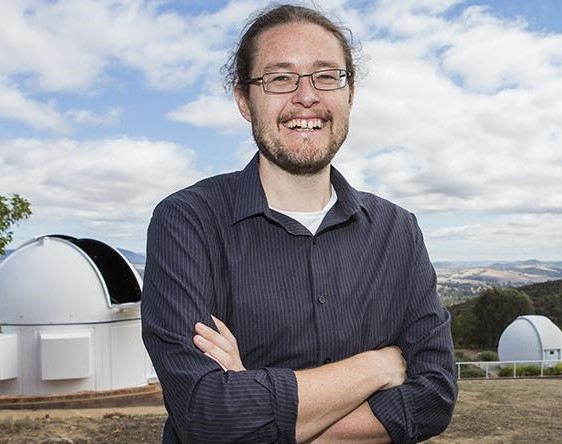
2024 is a leap year, which means it has 366 days rather than the standard 365 – the extra day being 29 February, which this year falls on a Thursday.
Far from a random phenomenon, the regular rotation of 29 February into our calendar every four years (with some exceptions!) is based on calculations developed centuries ago. Dr Brad Tucker. astrophysicist at The Australian National University (ANU), explains the science behind the leap year.
Why do leap years exist?
Leap years are really about trying to account for turning a calendar system that needs to be regular and evenly divided to match our orbit around the sun. The Earth’s orbit around the sun is not exactly 365 days, it’s a fraction more than that – and the fraction more is around six hours or so per year. That means it’s not 365 days, but 365 days and six hours.
So, over roughly four years, you get a 24-hour difference, i.e. a day. The leap year is that way of accounting for this fractional amount of time, so that we can make our calendar system relatively normal, and therefore be a relatively right reflection of our orbit around the sun.
What would happen if there was no leap year?
Interesting question. You can look at historically how things have happened. For instance, people used the lunar calendar for such a long time, because it’s similarly mimicked the motions of the stars over the course of the year. And the moon phases last about 30 days, it’s about 29-and-a-bit days, that’s roughly a month, and 12 of those is roughly a year. And people also noticed that it was always slightly more than that, about 365. And what people started to find was that, historically, the dates and the months were drifting away from the seasons.
What ends up happening if you don’t account for leap year, is that you would accumulate these days over time, such that in a relatively short amount of time, relatively being tens of years, you can start getting substantially out from where you should be in a calendar type system.
In fact, one of the reasons why the current system of leap year, called the Gregorian calendar, exists was because Easter, the religious holiday, which is always supposed to be around spring, was moving really far away from spring. And they wanted to correct for that.
So, when did leap years start?
Well, the first attempt at some sort of correction to the calendar system was actually the Julian calendar for Julius Caesar back in the 40s BC. And instead of the more eloquent system we have today, they realised, ‘Okay, well, it’s 365.25 days, and let’s account for that’. And they actually did a fairly complicated thing of rotating the amount of days in a year, and then they would flip flop these even and odd years. In order to account for the extra day, the emperor or Caesar would decide when that day should be and actually it turned into a political tool, because obviously, people wanted an extra day off. So, they actually added too many of these extra days off, and it became convoluted.
It was really in the 1500s with Pope Gregory [XIII], that the current calendar system was brought in, in terms of correcting for that, and so it was really based in mathematics.
It did go into effect in October 1582. That was the start of the Gregorian calendar system, however, not everyone adopted it.
As you can imagine, because this was a Catholic transition of the calendar system to reflect Easter, the Anglican Church in England didn’t actually bring in the Gregorian calendar system and leap year right away. By the 1700s there was a difference of almost two weeks between the two calendar systems.
But leap years don’t always happen every four years. What’s going on there?
My favourite part of leap year is every four years except if the year is divisible by 100, and except that if it’s divisible by 400.
For instance, 2100, you would think should be a leap year, but it’s not. So, even though it’s divisible by four, it’s also divisible by 100. And so that means that in 2100, it would skip being a leap year. 1900 was also skipped as a leap year, however, 2000 was a leap year because it’s divisible by 400.
The reason why is if you do a leap year exactly every four years, you actually correct for it too much. Because the difference in leap year, it’s just slightly less than the extra six hours, or that 0.25 of a day. So, if you do that every four years, you build up over a long period of time too much and you end up with a similar problem.
So, this somewhat convoluted mathematics allows it to be, while not perfect, correct on baselines of thousands of years, which was actually quite a remarkable achievement … allows for this really weird fractional, essentially 13-minute difference that you propagate through so that we can, over these times, be relatively true to the calendar system and the orbit of the sun.
So, when this was worked out in the 1500s they really knew what they were doing?
This was a heavy, real investment in effort and thinking long term … Over the span of 100 years, you get this slight shift, a fraction of a day ultimately, over the time, but then that corrects for itself the next 100 years, and you start again, and so on and so on. So, they really did think long term, whereas previous attempts were either let’s make it correct in the short term, or let’s try and make it clear. But I don’t think they were that clear either. And so it was really informed quite differently in this case. It was a fairly involved system.
Is there any individual we can credit, other than Pope Gregory, who probably didn’t do the maths?
Gregory didn’t do this himself, but hired and employed quite a few different scientists and a lot of Greek mathematicians, as well at the time worked on this. So, there was essentially a council that formed around Pope Gregory.
Claudius was one of the mathematicians who all worked on this project to get it right.
I think because it was supported by the Catholic Church at the time and had been instilled by the Catholic Church, it made it mainstream.
Canberra Daily is keen to hear from you about a story idea in the Canberra and surrounding region. Click here to submit a news tip.



